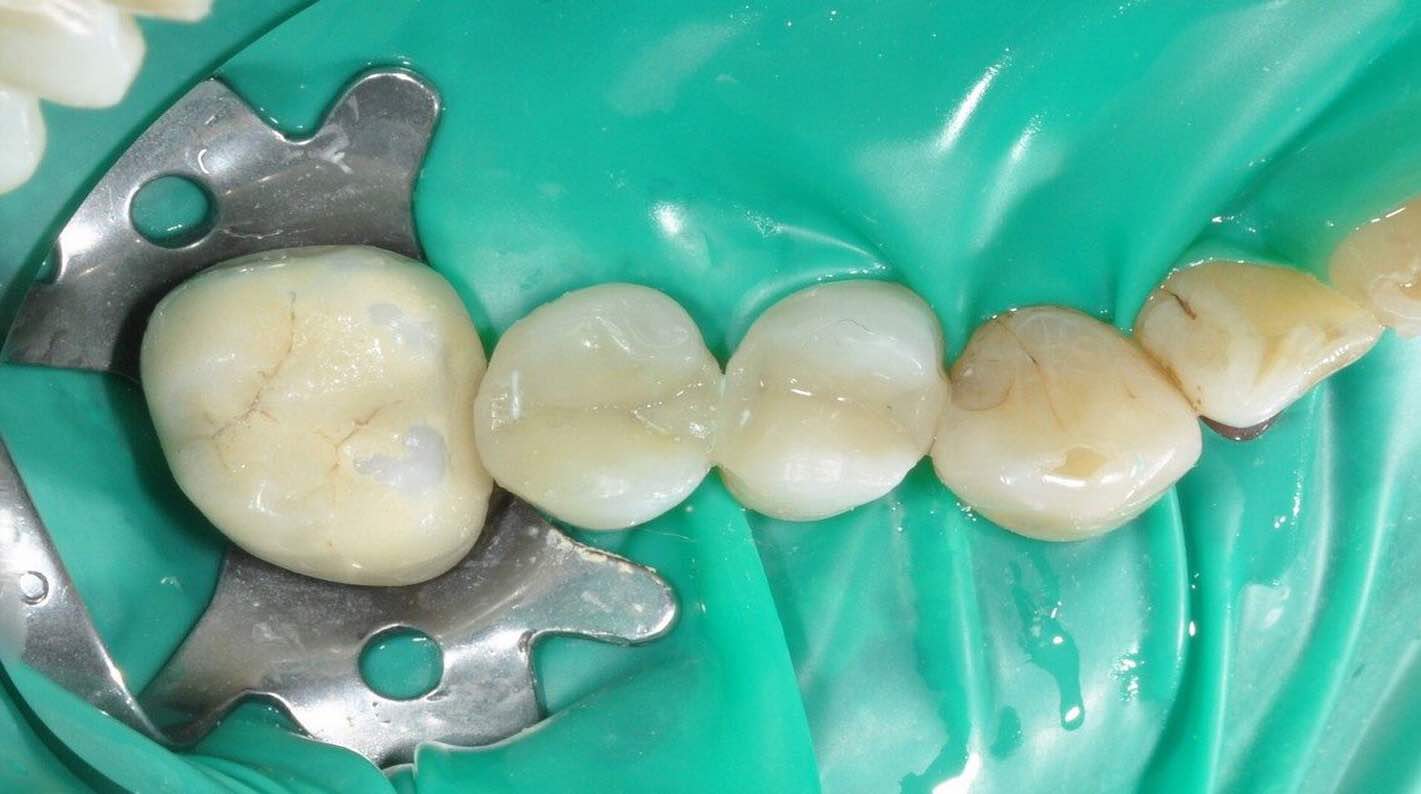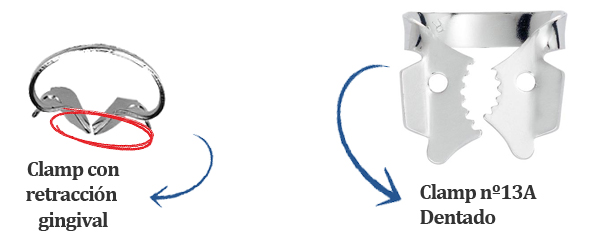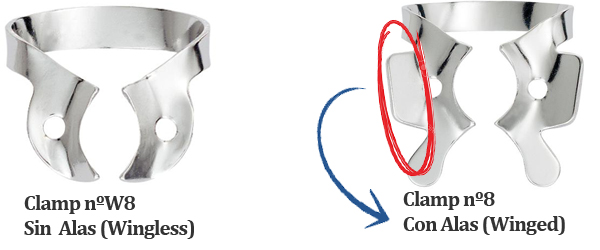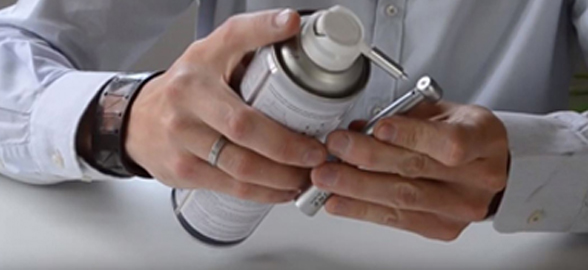Dental clamps are one of the essential dental instruments, together with the rubber dam and the Young's arch, for isolation of the intraoral field. In this article we are going to define the basic principles of use, their classification and the new forms and existing types to solve clinical cases successfully.

What are dental clamps used for?
The clamps are metal clamps that constrict the cervical area of the dental crown to hold the rubber dam. They are inserted using a porta-clamps or special forceps that manages to open the clamp by inserting the clamp into the two lateral holes.
To achieve isolation, the rubber dam is positioned next to the clamp; With the dam perforator a hole is made on the gum, and thanks to the elasticity of the dam it is possible to adapt it to the anatomy of each tooth, thus providing the necessary physical barrier for dental treatments.< /p>
The last indispensable instrument is the Young's arch or Osbi (special for Endodontics), which provides the necessary tension to the rubber dam to have a stable clinical field extraorally of the patient.
What are the benefits and uses of dental isolation clamps?:
- Physical protection barrier: prevents contamination of the clinical field, not only from dental treatments against blood and saliva, but also, as in composite restorations, where a dry environment for correct obturation.
- Isolation against contamination: eliminates contact with irritants such as hypochlorite in endodontics or peroxides for teeth whitening. At the same time, it allows a simple removal, with dental aspiration, of all the excess material.
- Avoid swallowing foreign bodies such as endodontic files.
- Better visualization for the dental professional of the surface to be treated.
- Psychological barrier: it is helpful for both the patient and the dental professional, since it prevents choking of water and provides a safe separation between the patient's tongue and the rest of the material.
- Hemostasis: blood pooling is prevented by constriction.
CAUTION! It is advisable to tie a piece of dental floss to the clamp and secure it before inserting it into the mouth. This prevents the patient from choking or swallowing the clamp in the event it dislodges the tooth.
Types of Dental Clamps
Dental clamps are differentiated according to their oval shape to adapt to each specific dental cervical morphology, from the small number 9 for lower incisors, to number 7 or number 56 for molars with a larger base circumference . Likewise, there are special shapes to adapt to partially erupted molars, teeth with occlusal trauma and other anomalies.
There are other differentiations as well:
- Serrated clamps (identified with an A) with a serrated edge to achieve greater retention on the tooth surface.
- Clamps with the distalized arch (identified with a D) to facilitate the access of instruments, such as the dental turbine on a cavity.
- Clamps with gingival retraction (identified with a B) ideal for periodontal treatment and cervical caries.

Classification of Dental Clamps
Most brands are governed by a universal coding that identifies the clamp on the tooth to which they are adapted by means of a number and letter.
Here we review the clamps most used in Dentistry:
Winged and Wingless Clamps:
- Clamps with wings: are those that have a small outer rim through which the rubber dam can be positioned extraorally and thus be carried together with the clamp in one go about the patient.
- Clamps without wings: unlike the winged ones, the clamps are first placed on the tooth and then the rubber dam is positioned on it.

These two types of clamps are distinguished in their nomenclature, for example, the letter W for Wingless Clamp . So, we can find the same instrument with a certain shape, with and without wings, being nºW2 for "without wings" and nº2 for "with wings".
Clamps for Anterior Sector:
Nº212: also known as the Butterfly Wing Clamp, to make cavities in the vestibular area of all anterior teeth
No. 00: with flat ends and high ring for small lower canines and first premolars.
Nº9: universal for the anterior sector with deviated flat ends and rigid arch for anterior teeth.
Clamps for Posterior Sector:
No. 1: shape designed for upper premolars
No. 00: with flat ends and high ring for small lower canines and first premolars.
No. 2: designed for the widest premolars.
Nº3: for lower molars and Nº4 for small upper molars.
No. 4: for small upper molars and No. 8 for standard upper molars.
Nº56: the universal clamp for both upper and lower molars.
Special Clamps:
No. 12A: with serrated edges to improve stability and retention. Both for lower right and upper left molars.
No. 13A: with serrated edges to improve stability and retention. For right upper and lower left molar.
No. 8A: It is used for molars with an irregular shape, compromised dental structure or small partially erupted teeth.
No. 14A: for larger molars with an irregular shape, compromised dental structure or partially erupted.
We hope this article has been of great help to you, remember to follow us on our social media to keep you informed of all the news, offers and promotions we have for you. Follow us! We are waiting for you.





